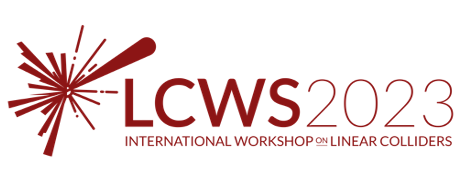Speaker
Description
The detectors at future e+e- linear colliders will need unprecedented precision on Higgs physics measurements. These ambitious physics goals translate into very challenging detector requirements on tracking and calorimetry. High precision and low mass trackers, as well as highly granular calorimeters, will be critical for the success of the physics program. To develop the next generation of ultralight trackers, a further reduction of dead material can be obtained by employing Monolithic Active Pixel Sensor (MAPS) technology. In MAPS, sensors and readout circuitry are combined in the same pixels and can be fabricated with commercial CMOS processes. Currently MAPS are widely used in different applications in High Energy Physics (HEP), in astronomy and in photonics. This technology has been utilized for the Inner Tracking System Upgrade (ITS2) of the ALICE experiment at the LHC characterized by a very low power consumption and O(µs) timing capabilities.
Future Colliders can benefit from fast detectors with O(ns) timing capabilities. This is feasible at the cost of a relatively high power consumption that could not be compatible with large area constraints. Today some commercial imaging technologies offer the possibility to produce large stitched sensors (with a rectangle area ~30 cm × 10 cm). Such large sensors are very interesting from a physics point of view, but they are very challenging from an engineering point of view.
The first part of this talk will discuss the limits and potentials of MAPS technology for detectors at future colliders.
The second part of the talk will present a first MAPS prototype designed by SLAC that was submitted this year in CMOS Imaging 65 nm technology. The prototype has dimensions of 1.5 mm × 1.5 mm with a pixel pitch of 25 μm. This work benefits from our collaboration with CERN, capitalizing on the improved sensor’s performance after a decade of optimizations. This prototype will set the baseline for the sensor and the electronics performance which will serve future developments.



